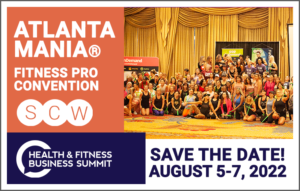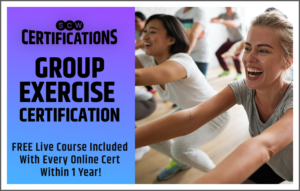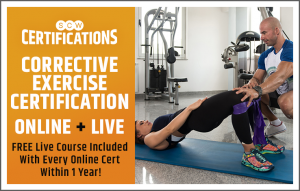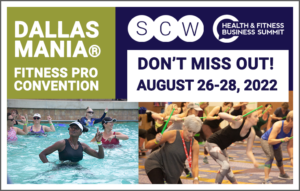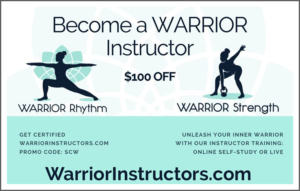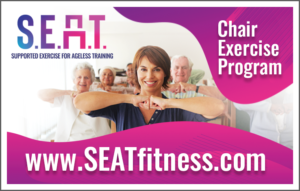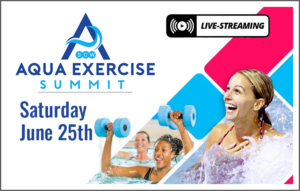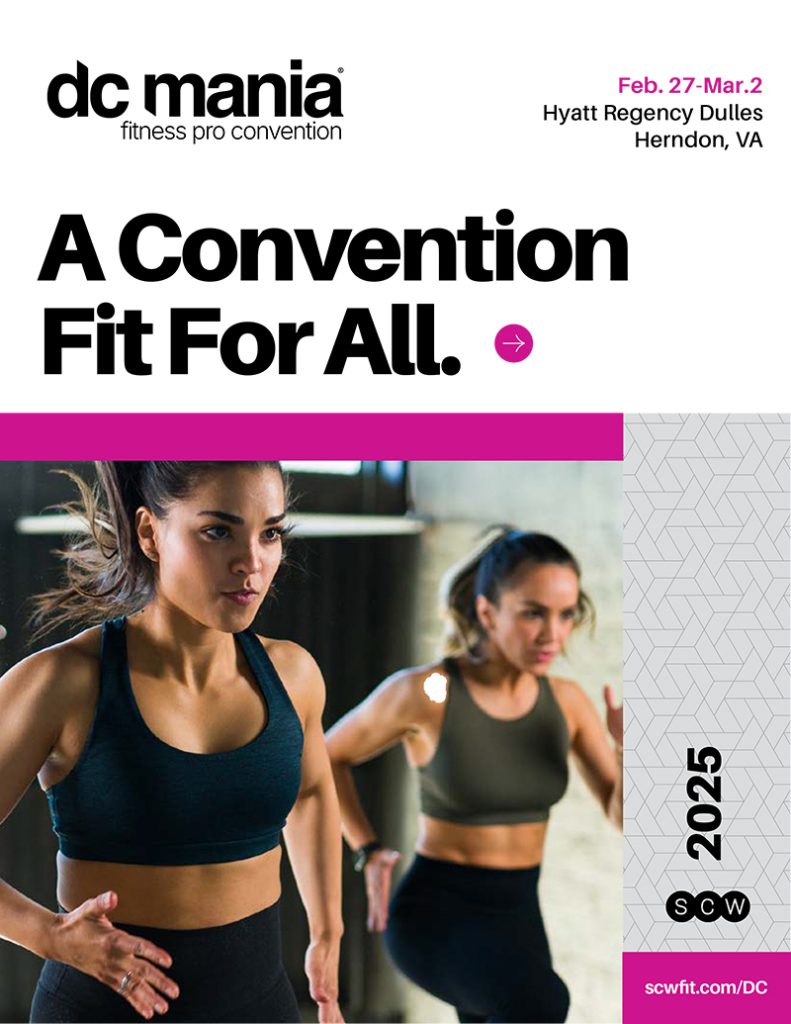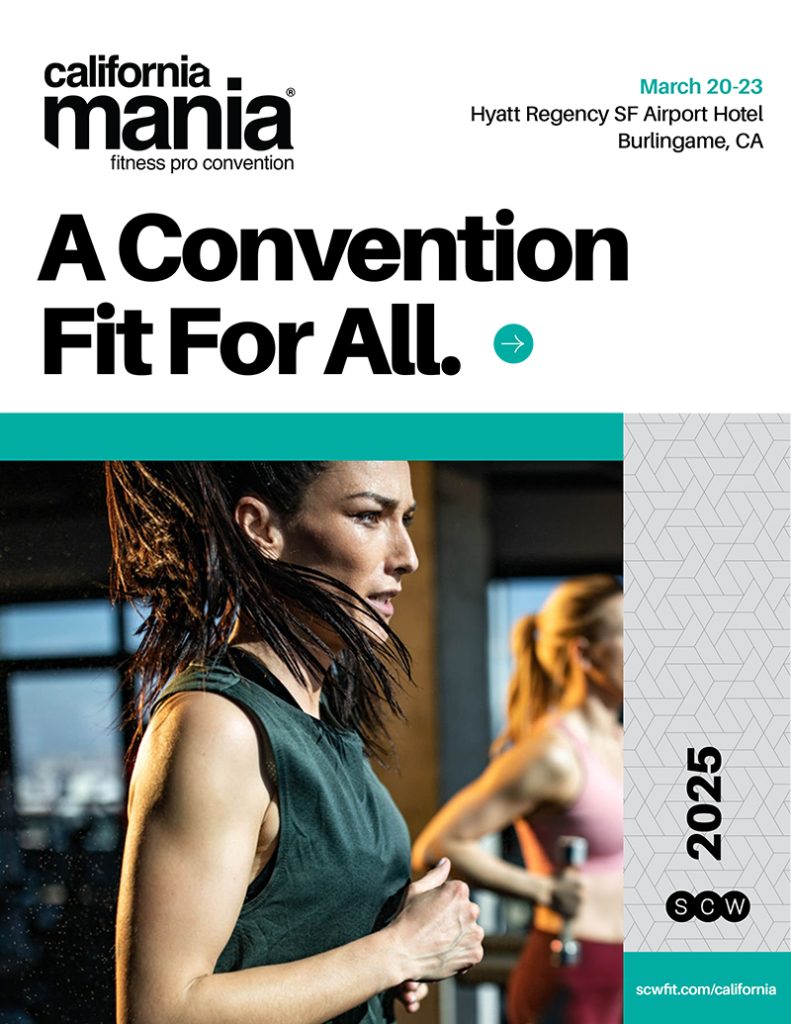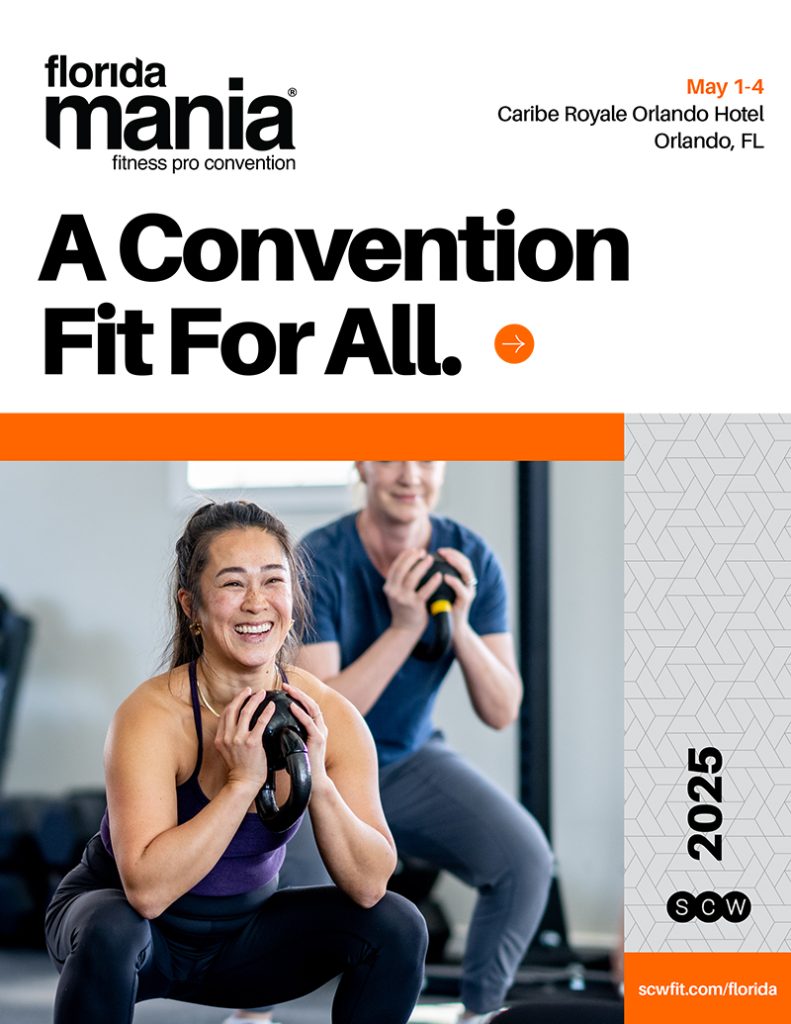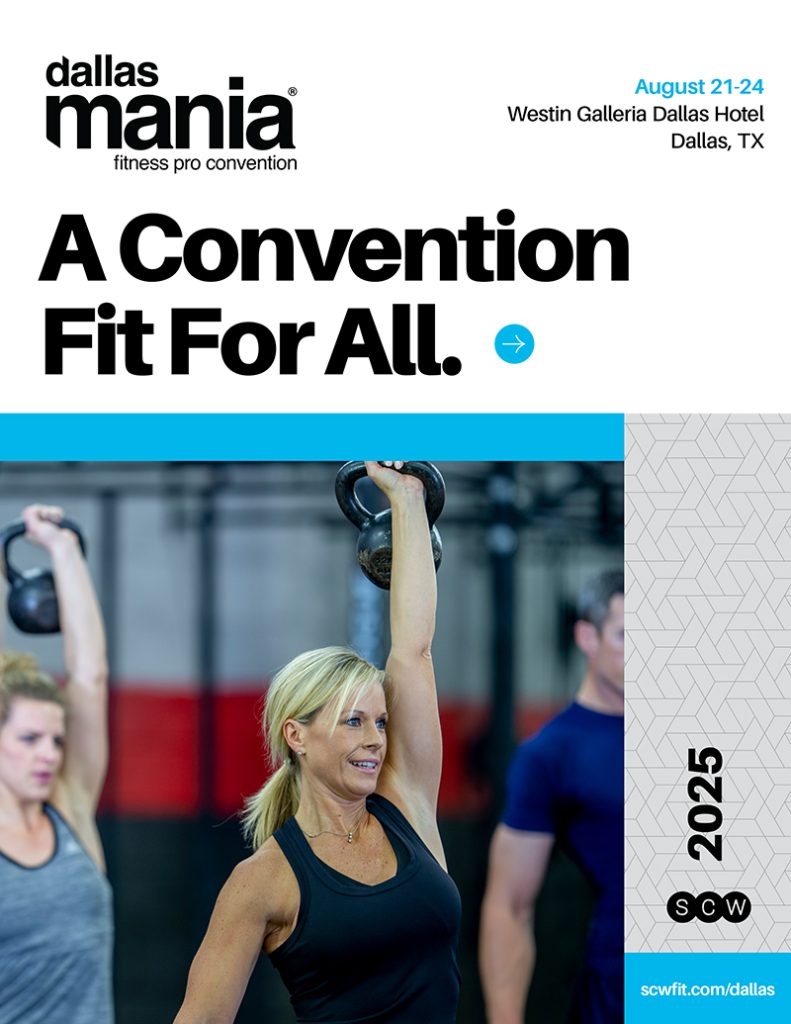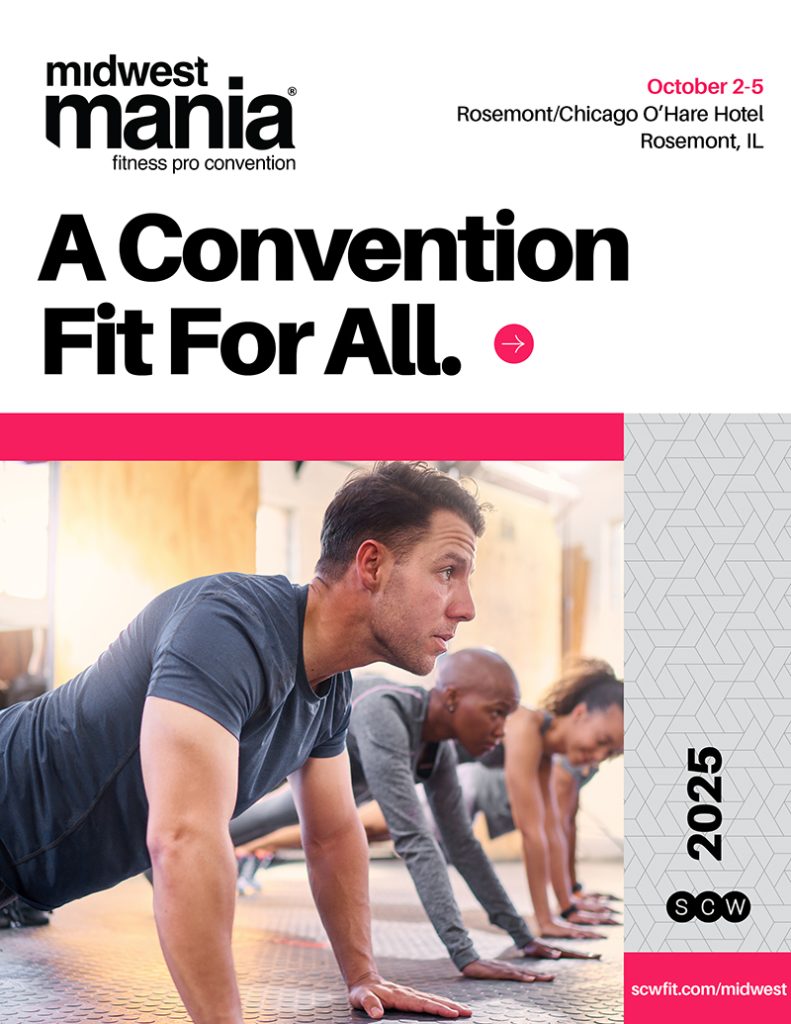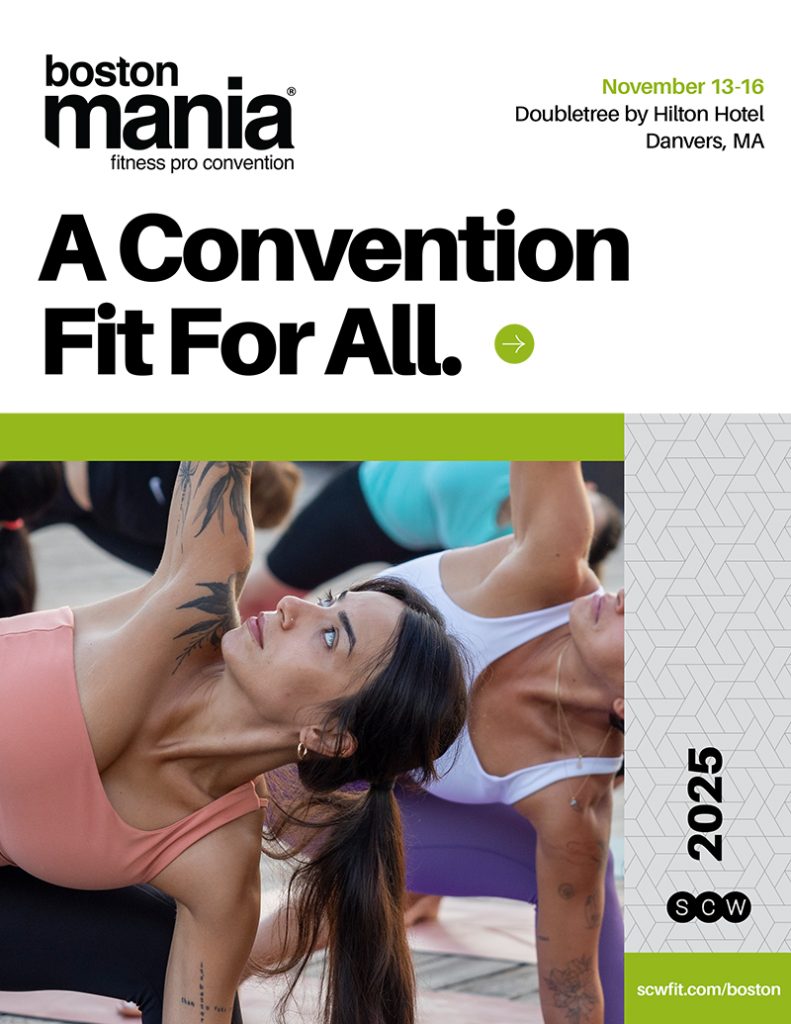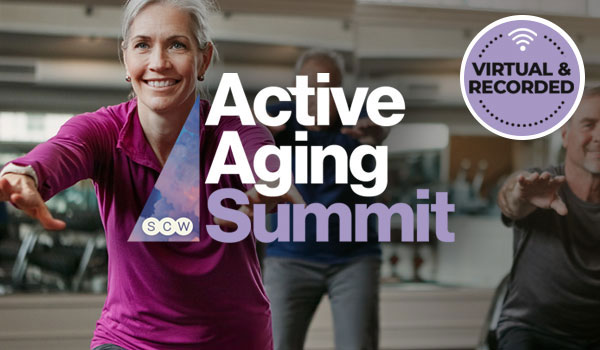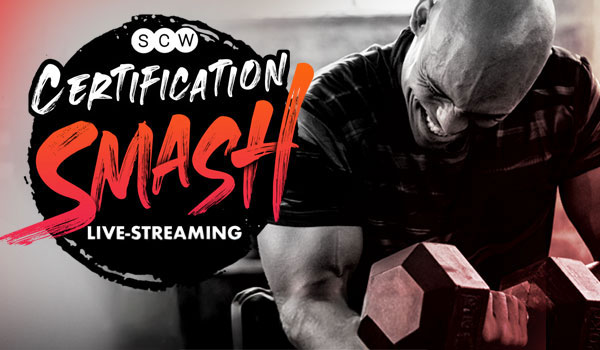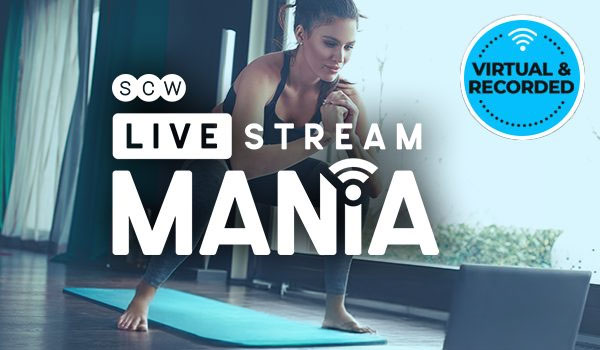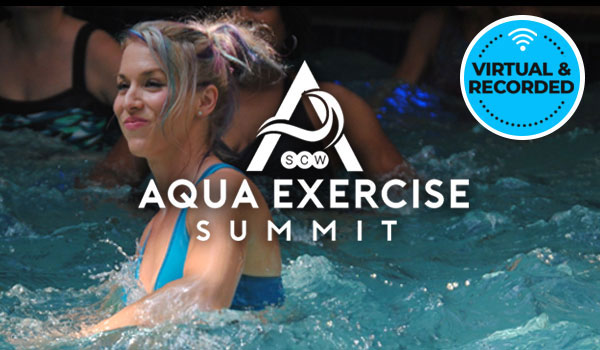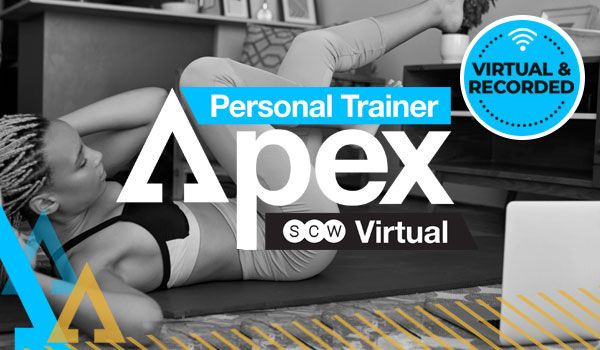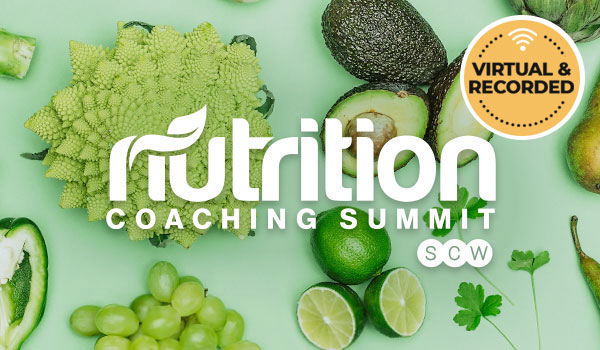
SCW Spotlite: Issue 46

3 Reasons Group Fitness Instructors Won’t Want to Miss #IHRSA2022
by Christine Ulatoski
For over 40 years, there has been one event that brings the global community of studios, gyms, and industry partners together—the IHRSA International Convention & Trade Show (#IHRSA2022). The event features hundreds of Trade Show exhibitors from around the globe, and education sessions taught by some of the industry’s most successful individuals.
This year, #IHRSA2022 is shaking things up to support fitness professionals from every corner of the industry. Let’s explore five reasons group fitness instructors and personal trainers will want to attend #IHRSA2022!
An Agenda Just for You
Every year the schedule is packed with sessions to help you get the inside track with strategies to improve sales & marketing, staffing, finance, personal training, and more! With more than 125 industry expert presenters and thought leaders, you’ll have no shortage of content to choose from.
Interested in fitness programming? Check out “Creating Inclusion in Your Health Club” on Wednesday, or “The New Special Population: The Role of Group Fitness in Drug and Alcohol Recovery” on Thursday. View all our other sessions specifically addressing fitness programming on our event website.
Get Hands-on with the Most Exciting Products in the Industry
The IHRSA Trade Show will highlight a wealth of new products, services, and solutions for you and your team to explore. With over 360,000 square feet of exhibition space, you won’t want to miss it!
Experience cutting-edge products and services with some of IHRSA’s Industry Suppliers. In addition to checking out the exhibitors on the Trade Show floor, you can hear presentations from partners with critical information, data, and key insights for your success as a fitness professional
Game-Changing Keynotes that are Sure to Inspire
IHRSA is proudly hosting three excellent keynote sessions from influencers outside of the fitness space. Amy & Ben Wright, Daymond John, and Liz Bohannon are sure to inspire and influence growth for you as a fitness professional. Hear from them on topics such as inclusivity and social impact, branding, and entrepreneurship. At #IHRSA 2022, look at other industries from these keynotes and get a fresh perspective to inspire your clients and students!
How to Attend #IHRSA2022?
Register for the event and discover more information—including details about our event agenda, the virtual program, translation, exhibitors, and hotel information—on our IHRSA 2022 website. Special room rates are available until May 20, or the hotel blocks sell out!

About the Author: Christine Ulatoski
Christine is the Senior Manager, Meetings, Events & Education for IHRSA. She develops educational content online and in person at IHRSA events, as well as manages all event speakers. Outside of IHRSA, Christine can be found teaching or taking group fitness classes, or in the kitchen baking her specialty: chocolate chip cookies!

Sara Kooperman Named Most Innovating Fitness Pro
by Julie King, MS
Congratulations to our inspirational leader, Sara Kooperman, whose tireless efforts throughout the pandemic benefitted fitness professionals around the world with valuable education and motivation during such an unprecedented period.
For her outstanding commitment and exceptional innovation using technology to serve the fitness industry, Sara recently earned the 2021 Most Innovating Fitness Pro Award from the Fitness Industry Technology Council (FIT-C).
Founded in 2012 as a non-profit membership organization, FIT-C aims to drive the fitness industry forward through the thoughtful adaptation of technologies using education, promotion, and collaboration.
“Sara really stood out to us in this very competitive category because she had such a tremendous impact, reaching about 20,000 industry professionals since COVID began,” says the Accenture team that selected the winners.
Here are just some of the ways that Sara has led the industry during the pandemic:
- With large gatherings prohibited or limited, SCW quickly pivoted from in-person events to deliver 19 live-streaming fitness professional conventions over 24 months, building our own proprietary live-stream convention program and site and training our staff and presenters how to use the system.
- As group exercise and personal training went virtual, SCW taught hundreds of fitness professionals – including longtime supporters and competitors – how to integrate video, music, and microphones for digital delivery of fitness services.
- SCW Fitness Education produced free webinars weekly on topics such as financial survival, virtual training, and more, each drawing 100-300 attendees, and with Sara leading more than 200 to date. During the height of the pandemic in 2020, one webinar attracted 1200 viewers nationwide, as Sara and her husband explained the process to apply for a PPP loan.
- To serve active agers and disabled populations, Sara collaborated with Ann Gilbert to develop Supported Exercise for Ageless Training (S.E.A.T.), an instructor-driven, chair-based workout program.
- To help health club professionals and industry suppliers navigate the disruptive business landscape due to COVID-19, Sara serves as a co-host on IHRSA’s monthly Talks & Takes talk show, where she donates her own and SCW’s time to research industry topics and create videos and promotional materials.
And on a more personal note, Sara kept her entire staff (that’s all of us!) employed throughout the pandemic, while she personally reduced her salary by 75 percent and is continuing to do so until the company’s live events recover to pre-pandemic levels.
“I’m thrilled to receive this prestigious award among so many excellent candidates,” she says. “And I’m so proud to have been able to serve not only my SCW family, but also the industry at large during such an uncertain period. It’s not about competition; it’s about spreading a love of education, health, and wellness.”
As Sara continues to blaze trails and add the FIT-C Award to her growing list of accolades, she also recently was nominated for the IDEA Fitness Leader of the Year Award. We are so grateful to work alongside such a selfless, determined visionary, who has passionately shaped the fitness industry and touched the lives of more than 300,000 fitness professionals over 40 years.
Cheers to Sara!
 About the Author, Julie King, MS
About the Author, Julie King, MS
For 30 years, Julie King has been a group exercise instructor and personal trainer, holding certifications from ACE, AFAA and AEA. She also was the Communications and Education Manager at Life Fitness, and has served as a fitness director and health club manager. With a M.S. in Kinesiology and a B.S. in Journalism, Julie is a contributing editor for IHRSA’s Club Business International magazine. She has been published in the Journal on Active Aging, Club Industry, Club Solutions, Campus Recreation, National Fitness Trade Journal, Recreation Management and Fitness Management.

How to Get Over the Hill
Hitting a plateau in your workout or weight management? It’s very common, particularly when we’re “slightly” past our peak years. In this month’ issue of the SCW CEC Course Review, Melissa Layne, MEd, a kinesiology professor at North Georgia State and member of the SCW Educational Faculty, is constantly tweaking her own regimen to keep her conditioning, nutrition, and health tip top. Her philosophy; “less is more.”
Melissa’s educational video course, “Overcoming Plateaus”, on the SCW Fitness website, addresses these issues, scientifically and thoroughly. I’ll give a brief review, focusing on the three areas of fitness plateaus along with safe and smart weight changes.
FITNESS PLATEAUS: Don’t get stuck in the “same old, same old” switch it up! With so many cardio equipment choices, treadmill, rower, bike, elliptical, no day ever has to be the same. They all put varying stresses on the body and work the muscles differently. The rower and elliptical involve the upper and lower body simultaneously and combine the “push and pull” that creates a balanced physique. Even bikes have differences. An upright bike emphasizes the quadriceps, while the positioning of a recumbent bike works on the hamstrings more.
Also, if you always do a “steady state” workout where your heart rate is between 70-80% of your max (220-age), you are burning a higher percentage of fat, but less total calories than an “interval workout” of anaerobic effort (80%-max or above), followed by a walk or easy pedal cycle. But since the interval workouts break down the body more, limit those to twice a week, and not on consecutive days.
With strength training, even beginners shouldn’t stay with one program longer than five weeks. Your body quickly gets used to the stress put on it and adapts. Alternate modalities (free weights, kettlebells, machines, and body weight) and constantly switch up the number of sets and repetitions to keep the brain and body guessing!
GAINING WEIGHT: Anyone can do this, right? Yes, but if you’re reading this, my guess is that you want to do so in a way that also makes you stronger and healthier. Professor Layne says to “eat nutrient rich foods at the right time,” and create a difference of 500 calories a day to gain a pound a week.
Before you workout have a snack that combines protein and complex carbohydrates. An all-protein bar will actually lead to “burnout” more quickly. Also, watch the sugary snacks that can spike your insulin! Post-workout, she recommends a Branched Chain Amino Acid, when your body turns from a catabolic state (from your workout) to an anabolic state, when the body begins to recover, tissues repair, and muscles grow (sounds so easy!)
LOSING WEIGHT: Not enough room in this article to go into all the ways this can be done, but Ms. Layne breaks it down in a way that can be achieved without a feeling of deprivation, and with overall health in mind.
Reverse the formula from above and aim for a calorie deficit of 500 per day for a very realistic pound per week loss. She doesn’t recommend cutting out carbs completely (you should never eliminate greens) but suggests “cycling” carbs. A “high carb” day would be 200-300 grams (at four calories each, 800-900 total), and 75-150 grams on your “low carb” days. This is sort of obvious, but your “high carb” days should be your major workout days, as carbs are the fuel your body counts on. Save my favorite, toasted coconut donuts, for special days.
Professor Layne recommends intermittent overnight fasting. Women can build up to 14 hours, and men can reach as much as 16. Coffee, tea, and juices are allowed during this period to sustain you through daily activities. She says to take a solid 20 minutes to eat a meal so your body can create leptin, the hormone that says, “four slices of pizza is plenty!”
Like most things, most people innately know which foods and activity promote health, and which ones don’t. Hope this can help you through! If you need CECs or are looking to enhance your fitness knowledge, choose from hundreds of courses on the SCW website. There is bound to be one (or several) that pique your interest. Keep your eyes and mind open for my next review.
 About the Author, Ed Halper
About the Author, Ed Halper
Ed has been a member of SCW since its inception, and currently holds four Certifications in Personal Training and Nutrition. He and wife, Laurie, were the proprietors of Mountain Fitness in Warren, NJ, from 1998-2018, and he still is employed at the site as a Fitness Trainer. Ed earned his B.A. from Monmouth College (now University) in 1980, where he participated in cross-country and track and served as head coach afterward. He pursued his love of fitness with a master’s degree in Education (concentration in Phys Ed) from Trenton State College (now College of NJ) in 1991. Ed, an active road runner with a marathon best of 2:43.06, has worked in the fitness field for over 35 years. He and Laurie are proud parents to two grown children, living in Washington, DC, and Boston. (The site of two SCW MANIA which give him a great reason to visit!) Ed’s fitness and nutrition articles can be found on the Mountain Fitness Facebook page. He can be reached directly at mntfit1@optonline.net.

Make it ‘Rain Men’ in Your Group Ex Classes
by Staci Alden
I’m guessing as an instructor or manager; you’ve heard a man or two say something along the lines of “Isn’t Barre for women?” or “Why don’t I see any other men in the class?” Of course, the elusive male participant who regularly attends group fitness classes tends to be the most dedicated once they try, but why so few? We, as Fitness Instructors, need to make an effort to encourage more men to attend classes and help them understand and trust that our classes will benefit them.
Here are some ideas and strategies that can help:
Update Your Schedule
Review your class names and descriptions. So many session descriptions still contain words like “tone” or “lean.” While these words might have worked 5-10 years ago, these words are honestly out of style. Everyone, both men and women, understands that toning or targeting specific parts of the body is not possible and could lead to distrust from the classes you offer. Instead incorporate the words “strong” and “functional” to describe the workout. People reading your schedule understand how classes provide positive energy and longevity to their lives, so the titles need to include that vibe.
Enlighten Instructors
Take some time at your next instructor team meeting or during instructor reviews to share the intention of encouraging more men to attend class. Equip your team with the tools to acquire and keep men in a class by giving instructors ideas for more gender-neutral cues and terminology. Simple tweaks like saying “wide squat” instead of “plié squat” or using muscle terminology for body parts like “glutes” instead of “booty” can go a long way. However, even the programming and demonstration of specific exercises can turn off men. For example, when a female instructor demonstrates an intense hip stretch with ease without providing or showing options, this can be a massive turn-off for both men and women.
Market with Men
Just because it might be challenging to find images of men in stock group fitness photos doesn’t mean you should give up. Take your own photos! Obtain the consent of a few male participants in classes or stage a male instructor as an attendee and, either before or after class, take a few photos of them. Showcasing more images of men taking classes in marketing material will help more men feel welcome to give it a try. Feature men in classes on your social media channels, blogs, and articles.
Ask Questions
Ask the men attending your classes, or even classes outside your facility, questions. Here are some suggestions:
- What do they love about taking group fitness classes?
- What kind of music do they enjoy hearing in a class?
- How has taking classes helped them achieve other goals outside of class?
- What helped them feel comfortable trying classes?
- Can we use your story in our marketing material to encourage more men to join classes?
Their answers, in addition to the use of more men in your marketing materials, can help achieve a more profound sense of trust especially for a man who wants to take that final step into the group ex room.
Experiment
Lastly, try experimenting with programming a few classes or workshops to entice men to attend a group experience. How about an early morning Progressive Strength Training class? Create specialized marketing with ample advertising time and then try it out for a few months. Here’s another idea, a Yoga for Men workshop. Educate men on common poses or stretches to help relieve tightness and create relaxation. A workshop is a less intimidating way to provide an educational experience in a class environment with the instructor that teaches regularly.
It’s time to ditch the stereotype that group fitness is the domain of women… MEN can and should, give it a try. So instead, let the above strategies help you draw more men into the world of group exercise and all the benefits that come with it. With the right terminology, education, visibility, and programming, I hope you find a steady increase of men in your classes.
 About the Author, Staci Alden
About the Author, Staci Alden
Staci is committed to helping group fitness managers and club operators elevate their programs, instructors, and leadership. As an experienced consultant and strategic planner for both digital and in-person offerings, her clients range from large luxury health clubs and international companies to small studios. She has designed world-class studios on a tight budget, launched signature formats, and built turnkey solutions for enhancing systems, leaders, and talent. Staci is also an established presenter, writer, and YouTube influencer, regularly interviewing thought leaders and fitness professionals on her channel. Staci is also a master instructor for Balanced Body®.

The Basics Behind Barefoot Training
“I believe in the sand beneath my toes. The beach gives a feeling, an earthy feeling…”
This memorable line of lyrics probably dates me considerably, but it is a favorite of mine from Third Eye Blind’s late 90’s alt-rock classic, “Semi-Charmed Life.” I love the fact that upon hearing it, nearly everyone can conjure both an image and a palpable sensation of what it means to be at the beach, but even more specifically, to FEEL the softness of the sand between the toes, and to KNOW the wonder of the Earth beneath our feet. The beach is a heart-warming and tantalizing place for most people, and while there are countless reasons for this, I believe that one of them, whether consciously or not, is the fact that we give ourselves permission to remove our shoes and make a connection between our bare feet and the unpaved, unadulterated Mother Earth.
When we allow our bodies to come in direct contact with the Earth, this is known as “grounding” or “earthing.” The electrical charges from the ground can potentially have a positive and therapeutic effect on our physical and mental wellbeing. Perhaps it sounds kind of mysterious, but these effects have been researched and scientifically proven to benefit various aspects of human health, such as reduction in inflammation and pain, improved immune function, improved sleep, stress and tension reduction, a mitigation of the effects from exposure to electrical fields, and more (Chevalier, et al., 2012; Oschman, et al.; 2015). In addition to direct connection with the ground, other mechanisms exist that can provide similar benefits, such as grounding mats and blankets.
The simplest way to bring our skin in contact with the ground is through our foundation, the soles of our feet! Like our hands, the feet are a major site of sensorimotor processing and nerve endings. In other words, there is a pre-wired mainline of communication and ability for information to be exchanged and interpreted between our feet and our brain. Most people in modern civilization have lost touch with this internal information superhighway because of the prevalence of shoes and the lack of diverse surfaces on which we traverse. Justin Price, a previous SCW MANIA® presenter and creator of The Biomechanics Method, discusses these concepts at length in his course material.
It takes little more than the removal of our shoes and socks, (yes, socks too!) to produce an immediate feeling of presence and an enhanced awareness within our bodies and the tasks we are carrying out. Walking meditation is a commonly taught technique for integrating mindfulness into our daily lives, but barefoot walking will inherently produce a meditative effect for most individuals. Whether we intend it or not, we will be highly invested in each step, the positioning of our feet and how this affects our balance and alignment up the kinetic chain, the textures, temperatures, and pressures of the surfaces below, and perhaps above all, our safety. If we mentally check out, whether with our vision or our tactile engagement, the likelihood of getting hurt increases dramatically, so it almost forces us to stay engaged at all times!
With this concept in mind, barefoot training does not have to be conducted outside or be in relation to the Earth. All our traditional movement and workout methods can potentially be upgraded by practicing them without shoes. If the mind-muscle connection is highly attuned and we are singularly attentive to the physical activity being performed, there is theoretically a greater chance of a successful outcome, proper alignment, and technique, and in turn, a reduced risk of injury.
There is a direct link between deep core and pelvic floor activation and standing barefoot. Being barefoot and properly engaging the muscles of our feet and toes amplifies our ability to integrate full-body movements, beginning with our foundation. It increases balance, stability, functionality, and reaction while training. Just think about it intuitively- many ancient athletic disciplines, such as martial arts, yoga, and gymnastics are practiced barefoot. They may not have had the hard science, but the wisdom was passed down throughout the years in these training modalities, and it is now being validated through research. For a complete review of all things barefoot training, including anatomical and biomechanical advantages, psychological effects, and performance improvements, check out Dr. Emily Splichal and the Evidence Based Fitness Academy, former SCW MANIA® presenters and industry leaders on this increasingly popular topic!
For some of us, just even the notion of walking or training barefoot might produce a sense of discomfort or resistance because our feet are not accustomed to anything other than the soft and uniform surfaces of our shoes. Possibly germs, lack of sanitized surfaces, social anxiety or even behavioral conditioning might cause uneasiness.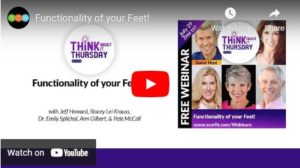
If you are considering adding barefoot training into your arsenal of tools, it is important to note a few things before jumping right into it. First, barefoot training is not for everyone. Some individuals have structural abnormalities in their feet that make it extremely challenging and uncomfortable, perhaps even impossible. Second, it is critical that we follow the Principle of Progression, a key component of exercise science, and build our barefoot exposure up slowly. Third, safety is always first- scan your training area, whether inside or out, in advance to ensure it is free from harmful surfaces, substances, and/or protruding objects to avoid unnecessary acute injury. Always seek the advice of medical professionals when attempting new training techniques, especially unorthodox methods that could present a risk to your orthopedic health like barefoot movement.
With all this being said, what are you waiting for? Remove your shoes, take your training and mind/body connection to a new level, and above all else, just BE FREE!
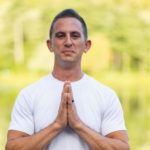 About the Author, Joshua Craddock
About the Author, Joshua Craddock
Joshua Craddock has worked in fitness and wellness full-time since graduating with degrees in Exercise Science and Sport Studies from Towson University in 2009. He has been teaching movement and mindfulness for nearly 22 years. Joshua is a strength and conditioning coach, primarily for young athletes, but also serves as a personal trainer, martial arts and boxing instructor, yoga, qigong, and meditation leader, and running coach. He started studying martial arts at 6 years old, establishing his interest in barefoot training, health and fitness, and knowledge of self at an early age.

How to Keep Members Engaged All Year
The national average for member retention is 72% according to IHRSA, but 28% slip through the cracks. They didn’t want to. They didn’t intend to. So why did they? On the day of their enrollment, they had high hopes of successfully achieving goals in our facilities. We, as owners, operators, and managers shared their desire. What went wrong?
A small portion of attrition can be attributed to things like people moving and falling ill. Most, however, quit for failure to form a habit. They stopped coming. They became discouraged. They felt like they were throwing money away. They quit. Had they been engaged; this classic story ends very differently. The member wins. The club wins.
Engagement is our most powerful weapon.
This article examines how thoughtful programming enhances engagement. What if, instead of flying by the seat of our pants, we deliberately created an annual calendar of events designed to make us “sticky”?
Here is an annual engagement calendar that I designed for our club. I broke it down by quarter and month and provided event ideas along with benefits and what’s needed for success.
Q1
JANUARY
Event: GroupX New Year’s BASH
What: New Year’s Day GroupX Bash. Medley of 2 or 3 formats and instructors.
Benefits: Exposes members to a new format or instructor. Provides fun and camaraderie and offers a great opportunity to feature new schedule offerings.
Event: DACIVERSARY Challenge (Your Club Name-iversary)
What: The DAC (Downtown Athletic Club) anniversary. Example: On our 35th year anniversary we did a 5 day challenge with 7 exercises each day, 5 reps of each. This signified our “#35”
- Pushups x5
- Rows x5
- Bicep Curls x5
- Tricep Kickbacks x5
- Shoulder Overhead Press x5
- Squats x5
- Sit Ups x5
As many rounds as desired.
Trainers and GroupX Instructors film tutorial videos for Facebook group posts. Members post photos or videos each day.
Benefits:
Encourages them to join the Facebook group and make online connections. Teaches history of the club. Introduces them to the Trainers and Instructors.
FEBRUARY
Event: Format Contest
What: Contest to see who takes the most types of classes. Members receive bonus points for trying something new.
Benefits: Often members are not aware of how much they enjoy a particular format until they try it. This event provides incentive to try something new, meet new people and establish more connections and friendships.
Event: Valentine’s Day
What: Wear pink or red to class on Valentine’s Day.
Benefits: Simple, fun, free. These small efforts turn a workout into an “experience.”
MARCH
Event: MEPS Madness MyZone
What: This type of event elicits friendly competition through gamification and wearable tech.
Benefits: Enhances social connection through the app. Strongly encourages adherence to exercise.
Event: Instructor Contest
What: Contest to see who takes the most classes from the most instructors. Members receive bonus points for trying a class from an Instructor they never have before.
Benefits: This challenge encourages members to try new Instructors. This event gives members incentive to try a different instructor with whom they might connect, meet new people, and establish more connections and friendships.
Event: St. Patrick’s Day
What: Wear green to class.
Benefits: See Valentine’s Day.
Q2
APRIL
Event: Meet the Trainers
What: Panel Interview (ZOOM or in-person) that gives members an opportunity to really get to know the Trainers. An “MC” asks them questions like:
- Where are you from?
- Why did you get into this field?
- What is your favorite cheat meal?
- What is your specialty or area of expertise?
Benefits: Gives Trainers an opportunity to showcase talent, and establish rapport, in a way that a bio on a website can’t do.
Event: Wear White
What: Blacklight GroupX Class
Benefits: Simple, fun, $20-$40 investment into blacklights. Small efforts create lifetime memories and make great photos for social media.
MAY
Event: MyZone Mini 3 Day Challenge
What: This type of event elicits friendly competition through gamification and wearable tech. It is like the MEPS Madness in March but has more of a “sprint” feel.
Benefits: Enhances social connection through the app.
Event: Mother’s Day Mimosa’s (Bend and Blend, Vinyasa and Vino…etc)
What: Pairing a Yoga class with a complimentary beverage. For Mothers’ Day moms and daughters can come as free quests.
Benefits: Creates an “experience”.
Q3
JUNE
Event: Hikes
What: Outdoor hikes led by any GroupX Instructor or Personal Trainer
 Benefits: Outdoorsy members disengage when the sun comes out. However, if we provide outdoor programming in the summer, we stay connected beyond the 4 walls of our brick and mortar.
Benefits: Outdoorsy members disengage when the sun comes out. However, if we provide outdoor programming in the summer, we stay connected beyond the 4 walls of our brick and mortar.
JULY
Event: Yoga in the Park
What: Yoga classes in the park.
Benefits: See June.
Permits are inexpensive and easy to obtain.
AUGUST
Event: Outdoor Bootcamp
What: Bodyweight HIIT style classes at a local park.
Benefits: See July.
Q4
SEPTEMBER
Event: Social Media Bingo
What: Canva.com has ready to customize templates for Social Media Bingo. Members screenshot the Bingo board which might include activities like:
- Meet with a Trainer
- Bring a Guest
- Try a class you’ve never tried
- Try an instructor for the first time
- Take a selfie in the club and post it
- Take a Yoga class
- Take a Cycle class
- Take a Lift class
- Take a Water class
- Go out of your way to meet a new member
- Try Small Group Training
- Take a rest day
Members share their Bingo screenshot in Instagram stories with a GIF check mark over whatever they just completed, and when they achieve BINGO, they notify the club by tagging the club’s account.
Benefits: Very fun for the younger generation. This is free advertising! Every time they share their BINGO board all of their friends see it!
Event: Fall GroupX Soiree
What: Medley of 2 or 3 formats and instructors.
Benefits: Exposes members to new formats and instructors.
Fun and camaraderie. Opportunity to create hype around new Fall schedule offerings when moms are establishing new routines and kids are back to school.
Event: Spooktacular MyZone Challenge
What: Elicits friendly competition through gamification and wearable tech. Like the March MEPS Madness event.
Benefits: Enhances social connection through the app. Promotes exercise adherence.
Event: Pilates for Pink
What: Donation based fundraiser in honor of Breast cancer awareness. Encourage members to wear pink to a Pilates class on a certain date.
Benefits: Charitable events mix well with endorphins.
NOVEMBER
Event: Tuesday Turkeyburn, Toys for Tots, Cycle Class for a Cause.
What: Bring a Toy! Bring a guest! Fundraiser is held after Thanksgiving on Giving Tuesday
Benefits: Members and staff feel good from the inside out!
DECEMBER
Event: Meet the Small Group Training Coaches
What: Panel Interview (ZOOM or in-person) that gives members an opportunity to really get to know the Small Group Coaches. An “MC” asks them questions like:
- What is something unusual about you that most people don’t know?
- Why do you love fitness?
- How did you get into the field?
- What is the difference between small group training, personal training, and group exercise in your own words?
Benefits: Gives Coaches an opportunity to showcase their personalities and coaching style
This schedule takes into consideration the highs of the new year, the natural declination after 90 days of membership, and even the “dog days of summer”. It is meant to be a template that has room for organic development. It can be customized to reflect club amenities, needs and programs.
Hope you find this annual engagement calendar helpful. I know our incredible and eager new members want to stick. Let’s give ‘em some glue.
 About the Author, Ellen de Werd
About the Author, Ellen de Werd
Ellen de Werd is a 21-year, fitness industry veteran. She is the founder of WARRIOR Rhythm™ and WARRIOR Strength™. Prior to the launch of the WARRIOR Instructor Academy, Ellen garnered national attention as a presenter and educator for Beachbody. In 2021 her WARRIOR formats spread internationally to 9 countries. She re-entered the conference scene, taking the nation by storm. Ellen is the Fitness Director at the Downtown Athletic Club and a Lululemon Ambassador in Eugene.

Movement From the Inside Out
by Lexi Bulich
A few of the recent fitness industry headlines read….
“Mental Wellness is Top Priority”- MINDBODY Business 2022 referring to Top Fitness Trends in 2022
“Supporting Improved Mental Health Through Fitness”, Club Industry 2022
“New Mental Health Tools Now Available to All Fitness Centers”- Club Industry 2022
The post-pandemic mental health crisis is real. According to the World Health Organization, the COVID-19 pandemic has triggered a 25% increase in the prevalence of anxiety and depression worldwide. As a scope of practice disclaimer, this article is in no way trying to provide medical advice. We encourage anyone struggling with their mental health to seek a certified medical professional trained to help. Instead, we are striving to highlight the need for fitness facilities to offer programs that take a more holistic approach- physical, mental, and emotional. Let me share how one program in particular, LaBlast® Dance Fitness, may be the perfect solution to help improve your mental health.
First of all, if you’re not familiar with LaBlast®, it is a dance fitness program based on all the ballroom dances you’ve seen on the TV show, Dancing with Stars– Foxtrot, Quickstep, Jive, Salsa, Waltz & more. It’s partner-free, uses music from every genre and encourages “every body” to move their whole self physically, mentally, and emotionally. LaBlast® can be done on land (Fitness, Line Dance & Chair) or in the pool (Splash) and can be adapted for every age and fitness level.
Patterns of movement, not choreography, are the foundation of LaBlast®. A pattern is something that is repeated over and over again. It is simple and easy-to-follow to prevent overthinking, allowing participants to get emotionally involved. We’ve all experienced fitness classes that are complicated and can’t be followed, likely causing a lack of self-confidence, confusion, and a totally lost feeling. If movements are kept simple, participants instead feel accomplished and successful. These feelings boost morale and self-esteem which, in turn, has a positive effect on your mental health.
Movement is powerful. According to a study published in JAMA Psychiatry, April 2022, adults that met the physical activity level of 2.5 hours/week of brisk walking experienced a 25% lower risk of depression than adults who did no physical activity. Adults who completed half the recommended activity level had an 18% lower risk of depression. LaBlast®’s unique movement philosophy is to move the whole body. No ‘steps’, no ‘arms’, just “whole body” movement from the inside out. When a student moves as one complete unit, layers of emotions are revealed and inhibitions are faced head-on. As encouragement, phrases like “get involved”, “let it go”, and “get out of your head are often used. These cues evoke ‘feeling’ not ‘doing’ helping participants tap into their souls and ultimately, lift their spirits.
Music can also be a great mood booster. According to the Global Council on Brain Health (GCBH) music has a positive effect on emotional well-being, including improving mood, decreasing anxiety, and managing stress. In a 2020 study by AARP, adults who engage in music listening are more likely to self-report their overall brain health and cognitive function as excellent or very good. They are also reporting lower levels of anxiety and depression. Listening to music with lyrics that provoke emotion or share a positive message is important to consider. “I Feel Good” by Pitbull, “I Am Enough” by Daphne Willis, “Praying” by Kesha, and “It’s Ok to Not Be Ok” by Marshmello/Demi Lovato… you get the gist. Simply enough, in LaBlast®, we choose music of all genres, eras, and artists with lyrics that reach deep inside each participant and make them ‘feel’ something they maybe haven’t felt in a while.
Understanding that overall wellness is mental, physical, and emotional is more important now than ever. The mind makes decisions (thinking), the physical body executes (doing), and the emotional self-experiences (feeling). It’s the feeling/experience that you create in your fitness program that will make a difference in the mental health of those in your classes and keep them coming back week after week.
Interested in experiencing the LaBlast® solution? Check us out online, at www.lablastfitness.com or join us at Florida MANIA®, May 20-22 and Atlanta MANIA®, August 5-7.
 About the Author, Lexi Bulich
About the Author, Lexi Bulich
Lexi Bulich has 20 years of fitness industry experience in leadership and instruction. For 12 years, she was the Regional Studio Fitness & Pilates Manager for the Colorado Athletic Clubs in Denver & Boulder, Colorado. Most recently, Lexi is the Fitness Coordinator for the City of Lafayette, overseeing both Group Fitness and Personal Training. Her true passion is dance fitness, and she is honored to share her passion as a LaBlast® Dance Fitness Master Trainer. When not dancing, Lexi can be found teaching a variety of other fitness formats, including indoor cycling, and spending time keeping up with her boys, Chad, Callen & Chase.

The Connection Between Nutrition and Mental Health
by Amber Toole
Recently, an uptick has emerged in suicide and violence cases, possibly connected to an increase in people suffering from mental health disorders, much of which is being attributed to the pandemic. Due to this surge, an awareness developed proposing a need for more help and support. Mental health disorders do not just affect the brain, they can distress the body as well. If you or someone you know is suffering, please seek the advice from a doctor or medical professional.
Nutrition is absolutely the key to total health. Some emerging research is showing just how critical a healthy eating plan is, especially for people who have mental health conditions like depression and anxiety.
Signaling molecules secreted by neurons called neurotransmitters are affected by deficiencies caused from poor nutrition choices. Increasing the quality of food choices, timing of meals and snacks and supplementation of key vitamins and minerals can help to decrease the severity and length of some mental health conditions. It is worth mentioning that being under the care of a physician is advised first and foremost and then adding the focus on diet next.
Important neurotransmitters to note; serotonin, dopamine, noradrenaline, and GABA, can all be increased by consuming certain nutrients. For example, tryptophan (found in turkey, eggs, and bananas) is needed to produce serotonin in our bodies. Carbohydrate rich foods – fruits, vegetables, and whole grains – trigger the production of both serotonin and tryptophan. In turn, the production of these brain chemicals will increase feelings of well-being and happiness. These neurotransmitters are also made from amino acids, so protein intake is important as well.
Low levels of many vitamins can contribute to depression. Having low amounts of Vitamin B, Magnesium, and Folate have all shown correlation to an increase in depressive symptoms. There are so many delicious foods that contain B Vitamins and Magnesium! Dark, leafy greens are always a great choice. Eggs, black beans, tuna, asparagus, nuts, beans, peas, and poultry are just a few of the many food choices that can increase these vitamins.
Studies have also shown that not eating enough Omega 3 fatty acids equates to an increase in major depression. Omega 3 fatty acids are found in cold water fish like salmon, mackerel, trout, herring, and sardines. Some plant sources that contain Omega 3 fatty acids are chia and flax seeds, and walnuts. Omega 3s are extremely important for excellent brain health and should be incorporated into a healthy eating plan at least 2x a week.
Making healthy food choices from high quality foods not only helps to decrease mental health conditions, but also increases overall health. When reading through all the examples of foods above, start to think about how to create delicious meals that include several of the choices.
Start with a quality, lean protein (cold water fish at least twice a week.) Then, add in 1-2 vegetables – leafy greens like spinach, kale, and broccoli, and other bright colors of the rainbow plus a whole grain for more carbohydrate rich goodness. Sprinkle in some fat sources like walnuts or chia seeds and you have a healthy meal complete with whole foods, all the macronutrients and tasty, high-quality food that will increase your health and feel-good hormones!
For more information about mental health awareness, join Keynote Address Presenters, Lynne & Victor Brick, from the John W. Brick Foundation, as they uncover “The Parallel Pandemic: Mental & Physical Health” at Florida MANIA®, May 20-22. Also join me for both Nutrition and Active Aging sessions throughout the 3-day event. Learn more at WWW.SCWFIT.COM/FLORIDA.
 About Amber Toole
About Amber Toole
Amber Toole is an ACE Certified Personal Trainer with a Bachelor of Science degree in Physical Education and Health from Georgia Southern University. She has 30 years of experience in the Fitness Industry and loves to share her expertise with other Fitness Professionals. It is her life’s mission to spread the truth about fitness and nutrition through education. She is the owner of The Training Toole – a Fitness and Nutrition Studio in Ocala, Florida, an SCW Educator and Fit Pro Mentor.
 We’re always looking for great content highlighting the newest things in the world of fitness. Please submit your article directly to editor@scwfit.com for immediate consideration!
We’re always looking for great content highlighting the newest things in the world of fitness. Please submit your article directly to editor@scwfit.com for immediate consideration! Spotlite, April 9, 2025
Spotlite, January 5, 2025
Spotlite, November 11, 2024
Spotlite, September 27, 2024
Spotlite, August 31, 2024
Spotlite, July 26, 2024
Spotlite, June 22, 2024
Spotlite, May 23, 2024
Spotlite, April 26, 2024
Spotlite, March 22, 2024
Spotlite, February 19, 2024
Spotlite, January 20, 2024
Spotlite, December 21, 2023
Spotlite, November 18, 2023
Spotlite, October 22, 2023
Spotlite, September 21, 2023
Spotlite, August 19, 2023
Spotlite, July 19, 2023
Spotlite, June 19, 2023
Spotlite, May 18, 2023
Spotlite, April 21, 2023
Spotlite, March 28, 2023
Spotlite, February 18, 2023
Spotlite, January 21, 2023
Spotlite, December 16, 2022
Spotlite, November 19, 2022
Spotlite, October 22, 2022
Spotlite, September 24, 2022
Spotlite, August 23, 2022
Spotlite, July 22, 2022
Spotlite, June 20, 2022
Spotlite, May 18, 2022
Spotlite, April 20, 2022
Spotlite, March 25, 2022
Spotlite, February 17, 2022
Spotlite, January 14, 2022
Spotlite, December 17, 2021
Spotlite, November 18, 2021
Spotlite, October 25, 2021
Spotlite, September 16, 2021
Spotlite, August 9, 2021
Spotlite, July 10, 2021
Spotlite, June 8, 2021
Spotlite, May 14, 2021
Spotlite, April 30, 2021
Spotlite, March 30, 2021
Spotlite, February 23, 2021
Spotlite, January 20, 2021
Hyatt Regency Dulles
Herndon, VA
Hyatt Regency SF Airport
Burlingame, CA
Caribe Royale Orlando
Orlando, FL
May 1-4, 2025
May 2026
Grand Hyatt Atlanta Buckhead
Atlanta, GA
July 24-27, 2025
July 2026
Westin Galleria Dallas
Dallas, TX
August 21-24, 2025
August 28-30 2026
Rosemont Chicago O’Hare
Rosemont, IL
Oct. 2-5, 2025
Oct. 2-4 2026
Doubletree by Hilton
Danvers, MA
Nov. 13-16, 2025
Nov. 13-15, 2026


